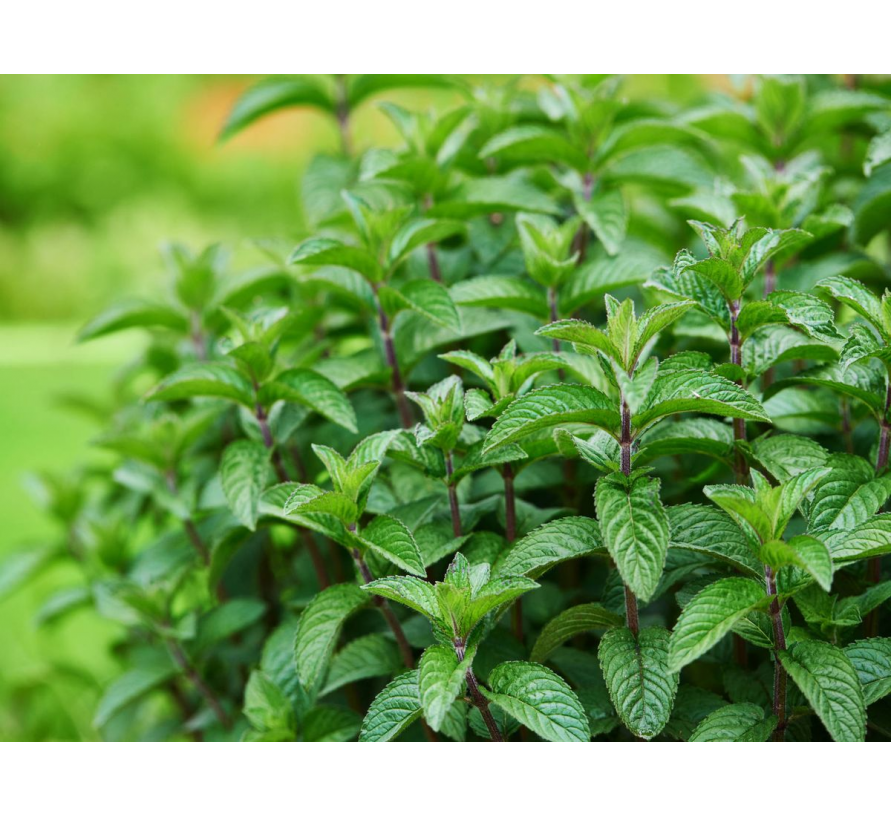Are mint and spearmint the same? Differences between these two plants, culinary uses and tips for growing them.
Mint and spearmint are two widely used plants in cooking, due to their distinctive aroma and refreshing flavor.
They are often confused due to their similarity, but they are actually different plants with unique characteristics and uses.
In this article, we will explore the differences between mint and spearmint, their culinary uses, and provide practical tips for growing them at home.
Ready?
Well, let's go!
Differences between mint and spearmint
Before we talk about their uses and cultivation tips, it's important to understand the key differences between mint and spearmint.
1. What is mint?
Mint, scientifically known as Mentha, is a perennial plant that belongs to the Lamiaceae family.
It is characterized by its oval, slightly toothed leaves and an intense green color. There are several varieties of mint, such as peppermint, spearmint, water mint, among others.
Mint is known for its fresh and invigorating aroma, with a slightly sweet touch.
And what is spearmint?
Spearmint, whose scientific name is Mentha spicata, is also a perennial plant of the Lamiaceae family.
Unlike mint, spearmint has narrower and elongated leaves, with toothed edges and a lighter green color.
Its aroma is similar to mint but with a milder and less sweet nuance.
Main differences between mint and spearmint
1. Leaf color
Mint is characterized by having intense and bright green leaves.
On the other hand, spearmint has leaves with a lighter and softer green tone.
This difference in color can be useful to distinguish between the two plants, especially when observing them side by side.
2. Leaf texture
The texture of the leaves also varies between mint and spearmint.
Mint has more rounded and wide leaves, while spearmint has narrower and elongated leaves.
To the touch, mint leaves are usually softer and smoother, while spearmint leaves have a slightly rougher texture.
3. Flavor and aroma
Taste and aroma are distinctive characteristics between mint and spearmint.
Mint has a sweet and refreshing taste, with a touch of menthol. Its aroma is invigorating and commonly associated with the sensation of freshness.
On the other hand, spearmint offers a similar but milder and less sweet flavor. Its aroma is also fresh but with a softer and herbal nuance.
4. Beneficial properties
Both mint and spearmint share beneficial medicinal properties for health.
Both plants are known for their digestive, antispasmodic, and stimulating properties. However, some studies suggest that mint may have more potent calming and analgesic effects due to its higher menthol content.
Spearmint can also help relieve digestive discomfort and provide a refreshing and relaxing effect.
Culinary Uses
1. Culinary uses of mint
Mint is a highly versatile ingredient in cooking and is used in a variety of dishes and beverages worldwide.
Its fresh or dried leaves can be added to:
- Salads.
- Sauces.
- Dressings.
- Stews.
- Desserts.
- Cocktails (like the famous mojito).
In Mediterranean cuisine, mint is an essential component in traditional dishes like tabbouleh and mint yogurt sauce.
It is also used to flavor refreshing beverages such as the mojito and mint tea.
2. Culinary uses of spearmint
Like mint, spearmint is widely used in cooking.
Its leaves add a touch of freshness to various dishes and beverages.
Spearmint is commonly used in Middle Eastern and North African cuisine, where it is added to salads, teas, tagines, sauces, and desserts.
It is also used to flavor traditional beverages like spearmint tea and spearmint lemonade.
Cultivation Tips
If you want to enjoy the freshness of mint and spearmint directly from your own garden or balcony, here are some tips for growing these plants at home.
1. How to cultivate spearmint at home
Spearmint is a resilient and easy-to-grow plant. Follow these steps to cultivate it at home:
- Choose a sunny location: Spearmint thrives in areas that receive direct sunlight for at least 4-6 hours a day.
- Prepare the soil: Ensure you have well-draining and fertile soil. You can improve soil quality by adding compost or organic fertilizer.
- Planting: Sow spearmint seeds or transplant seedlings into the soil at a depth of approximately 1 cm. Leave about 30 cm of space between each plant.
- Adequate watering: Spearmint requires regular watering to keep the soil moist but not waterlogged. Avoid overwatering, as it can lead to root rot.
- Harvesting: You can start harvesting spearmint leaves when the plant has sufficient growth. Remember to leave some leaves on the plant to allow for continued growth.
2. How to cultivate mint at home
Mint is also a resilient and easy-to-grow plant. Follow these steps to cultivate it at home:
- Choosing a location: Like spearmint, mint requires direct sunlight for at least 4-6 hours a day.
- Preparing the soil: Ensure you have well-draining and organically rich soil. You can add compost or fertilizer to the soil before planting.
- Planting: You can either plant mint seeds or purchase seedlings from a nursery. Place the seeds or seedlings in the soil at a depth of approximately 1 cm and leave about 30 cm of space between each plant.
- Adequate watering: Mint requires regular watering to keep the soil moist, but avoid waterlogging.
- Harvesting: As the plant grows, you can start harvesting mint leaves. Be sure to leave some leaves on the plant for continued growth.
Do you now have a clear understanding of the differences between these two culinary plants?
As you have seen, mint and spearmint are similar in appearance and aroma but have distinctive differences in terms of color, texture, and flavor.
Both plants are widely used in cooking to add freshness to various dishes and beverages. Moreover, their cultivation at home is relatively simple and rewarding.
And the best part is that both plants are very easy to grow at home.
Remember, if you need help with growing your plants, you can rely on us.
Just write to us using this form and ask us your questions.
We'll be happy to assist you!

 English
English Spanish
Spanish
Comments
Leave your comment